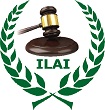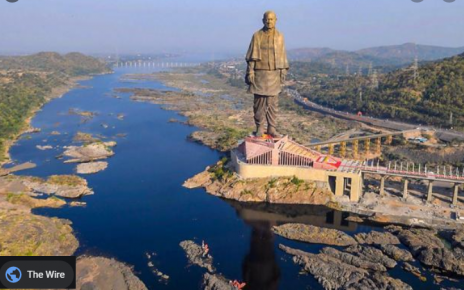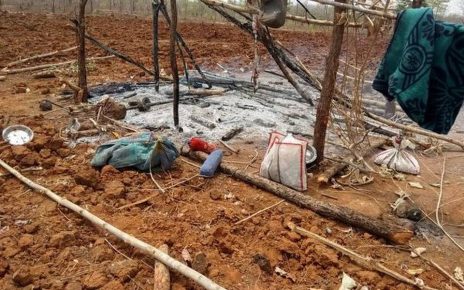In its submission to the Ministry of Environment, Forest and Climate Change, ILAI has requested either to withdraw the draft Environmental Impact Assessment Notification, 2020 as an executive order cannot override, amend or supersede the statutory provisions or ensure that the final EIA, 2020 expressly provide for compliance with the statutory laws like the PESA Act and the Forest Rights Act and the Supreme Court judgments relating to powers of the Gram Sabha on giving consent for projects.
ILAI categorically stated that unless the draft EIA 2020 complies with constitutional propriety, its constitutional validity shall be subject to challenge before the Supreme Court because allowing an executive order to override, amend or alter statutory provisions amounts to inviting anarchy in the country.
30 June 2020
To
The Secretary
Ministry of Environment, Forest and Climate Change
Government of India
Indira Paryavaran Bhawan,
Jor Bagh Road, Aliganj
New Delhi-110 003
Email: eia2020-moefcc@gov.in
Dear Sir/Madam,
The Indigenous Lawyers Association of India (ILAI), a network of indigenous and tribal lawyers across India, is writing to make its submission on the Draft Environmental Impact Assessment (EIA) Notification 2020 released by the Ministry of Environment, Forest and Climate Change.
1. PRELIMINARY SUBMISSION: An executive order (EIA Notification) cannot override, amend or alter statutory provisions (such as PESA Act and Forest Rights Act) relating to the powers of the Gram Sabhas on granting consent including for projects
The Draft Environmental Impact Assessment (EIA) Notification 2020, among others, overrides the powers of the Gram Sabha guaranteed under the Panchayats (Extension to the Scheduled Areas) Act, 1996 (PESA) and the Scheduled Tribes and Other Traditional Forest Dwellers (Recognition of Forest Rights) Act, 2006 (FRA) to grant approval or consent before any project/activity can start in tribal/forest areas. The Supreme Court in its judgement dated 18.04.2013 in W.P.(C) No.180/2011 in the case of Orissa Mining Corporation Versus Ministry of Environment & Forest & Others upheld that it is mandatory to obtain consent of the Gram Sabhas.
In this regard, the ILAI draws attention of the Ministry of Environment, Forest and Climate Change to the following existing six settled legal propositions as to why the Draft EIA, 2020 (executive order) has to fully comply with the PESA Act and the FRA (statutory laws):
First, it is a settled law that executive fiat/instructions cannot override the statutory provisions. The Supreme Court has upheld the same in a number of judgements such as B.N. Nagrajan v. State of Mysore [AIR 1966 SC 1942], Sant Ram Sharma v. State of Rajasthan and Ors. [AIR 1967 SC 1910], Union of India and Ors. v. Majji Jangammyya and Ors. [AIR 1977 SC 757], B.N. Nagarajan and Ors. v. State of Karnataka and Ors. [AIR 1979 SC 1676], P.D. Agrawal and Ors. v. State of U.P. and Ors., [(1987) 3 SCC 622]; M/s. Beopar Sahayak (P) Ltd. and Ors. v. Vishwa Nath and Ors. [AIR 1987 SC 2111], State of Maharashtra v. Jagannath Achyut Karandikar [AIR 1989 SC 1133], Paluru Ramkrishananiah and Ors. v. Union of India and Ors. [AIR 1990 SC 166]; Comptroller and Auditor General of India and Ors. v. Mohan Lal Malhotra and Ors. [AIR.1991 SC 2288], State of Madhya Pradesh v. G.S. Dall and Flour Mills [AIR 1991 SC 772], Naga People’s Movement of Human Rights v. Union of India and Ors. [AIR 1998 SC 431]; C. Rangaswamaeah and Ors. v. Karnataka Lokayukta and Ors. [AIR 1998 SC 96] etc.
Second, executive order also cannot amend or supersede the statutory rules or add something therein, and executive orders cannot be issued in contravention of the statutory rules for the reason that an executive order is not a statutory rule nor does it have any force of law while statutory rules have full force of law provided the same are not in conflict with the provisions of the Act. The Supreme Court has upheld the same in a number of judgments including in State of U. P. and Ors. v. Babu Ram Upadhyaya [AIR 1961 SC 751] and State of Tamil Nadu v. M/s. Hind Stone etc. [ AIR 1981 SC 711].
Third, the Supreme Court in its judgement dated 18.04.2013 in W.P.(C) No.180/2011 in the case of Orissa Mining Corporation Versus Ministry of Environment & Forest & Others upheld that it is mandatory to obtain consent of the Gram Sabhas. In the said case, the apex Court asked the Gram Sabha to freely determine and take a final decision on the grant of Stage II clearance for the Bauxite Mining Project of the Vedanta and directed the Ministry of Environment and Forests to abide by the decisions of the Gram Sabha. The Supreme Court further directed that “The proceedings of the Gram Sabha shall be attended as an observer by a judicial officer of the rank of the District Judge, nominated by the Chief Justice of the High Court of Orissa who shall sign the minutes of the proceedings, certifying that the proceedings of the Gram Sabha took place independently and completely uninfluenced either by the Project proponents or the Central Government or the State Government.”[1]
Fourth, the Ministry of Environment and Forests itself vide letter dated 03.08.2009 had informed all State Governments that “a letter from the State Government certifying that proposals for such diversion (with full details of project and its implications, in vernacular / local languages) have been placed before each concerned Gram Sabha of forest-dwellers, who are eligible under the FRA” while diverting forest land for non-forest purposes under the Forest (Conservation) Act, 1980.[2] The Ministry Environment, Forests and Climate Change cannot change its position in 2020 based on some whims and fancies.
Fifth, the Forest Conservation (Rules), 2017 provides that the District Collector shall (i) complete the process of recognition and vesting of forest rights in accordance with the FRA, 2006 for the entire forest land indicated in the proposal and then (ii) “obtain consent of each Gram Sabha having jurisdiction over the whole or a part of the forest land indicated in the proposal for the diversion of such forest land and compensatory and ameliorative measures, if any, having understood the purposes and details of diversion, wherever required”.[3]
Sixth, it is also settled law that what cannot be done directly cannot also be done indirectly. The Ministry of Environment, Forest and Climate Change cannot directly change the laws like PESA or FRA as these are not even within its mandate (these laws are under the mandate of the Ministry of Tribal Affairs)e and it cannot indirectly change the same through a new executive order.
Unless the draft EIA 2020 complies with constitutional propriety, its constitutional validity shall be subject to challenge before the Supreme Court because allowing an executive order to override, amend or alter statutory provisions amounts to inviting anarchy in the country. In our considered opinion, the Hon’ble Supreme Court shall have no other options but to rule that no executive order can override, amend or alter statutory provisions or else, the rule of law shall lose its meaning.
2. Detailed objections to the Draft EIA Notification 2020
2.1 Several projects shall not require environmental clearance
All projects listed under Category ‘B2’ have been exempted from the process of scoping,[4] preparation of environment impact assessment (EIA) report,[5] and public consultation.[6] ‘Scoping’ means the process of determining the Terms of Reference by the Regulatory Authority for the preparation of EIA Report, for the project, seeking prior-EC.[7]
Further, projects under Category ‘B2’ unless specifically mentioned in the Schedule shall not be placed before the Appraisal Committee. Such projects also do not require environmental clearance; they require merely permission or consent called “prior-Environment Permission” or “prior-EP” of the Regulatory Authority which is the State Level Environment Impact Assessment Authority (SEIAA) or Union Territory Level Environment Impact Assessment Authority (UTEIAA), as the case may be.[8] Clause 3 defines “Prior Environment Permission” as “the permission or consent of Regulatory Authority for carrying out the proposed project listed in the Schedule in respect of Category ‘B2’ that are not required to be placed before Appraisal Committee as specified in the Schedule”. The prior-EP should be issued through online mode within 15 days from the date of application and in case of rejection of the application shall inform reasons for the same.[9]
This is nothing but to do away with environmental clearance for a number of projects and give license to destroy the environment in India.
It is submitted that this provision cannot apply to the areas covered under the PESA and FRA as elaborated in the preliminary submissions.
2.2 Withdrawal of public consultation
The draft defines “Public Consultation” as “the process by which the concerns of local affected persons and others, who have plausible stake in the environmental impact of the project, are ascertained with a view to appropriately take into account all such material concerns while designing the project”. However, the public consultation is exempted for the following[10]:-
- modernization of irrigation projects
- all projects falling under items 10(f), 16, 17, 19, 20, 21, 23, 24, 25, 27, 36, 40 of the schedule located within Notified Industrial Estates;
- all projects falling under item 42 and 43 of the Schedule;
- all Category ‘B2’ projects and activities;
- all projects concerning national defence and security or involving other strategic considerations as determined by the Central Government;
- all linear projects under item 31 and 38, in Border Areas, and
- All the off-shore projects located beyond the 12 Nautical Miles
The objective of the draft EIA Notification 2020 is to fast-track approvals of many projects without public hearing or without submitting EIA report at all.
The draft proposes to exempt all projects concerning national defence and security or involving “other strategic considerations” from public consultation[11] but it does not define what constitute “national defence and security” or “strategic considerations”.
The Supreme Court in a number of judgments including Maneka Gandhi vs Union of India [1978 SCR (2) 621] had consistently held that the procedure cannot be arbitrary, unfair or unreasonable. The blanket exemptions without defining what constitute “national defence and security” or “strategic considerations” is arbitrary, unfair or unreasonable. This proposal does not meet the test of constitutionality and therefore ought to be deleted.
Further, it is submitted that this provision cannot apply to the areas covered under the PESA and FRA as elaborated in the preliminary submissions.
2.3 Illegal attempt to override, amend or alter statutory provisions (PESA Act and Forest Rights Act) relating to the powers of the Gram Sabhas
The draft EIA 2020 at Clause 17 (5) states that
“Clearances from other regulatory bodies or authorities shall not be required prior to receipt of applications for prior-EC or prior-EP, as the case may be, or scoping, or appraisal, or decision by the Regulatory Authority Concerned, except:-
(a) Approval of mining plan from the Competent Authority, in case of mining projects;
(b) In-principle approval for diversion of Forestland under Forest (Conservation) Act, 1980 (Act number 6 of 1980) involved in the project;
(c) Recommendations of State or Union Territory Coastal Management Authority, in case of the project located in the CRZ or ICRZ area; and
(d) While full acquisition of land may not be pre-requisite for the consideration of proposal for prior-EC, in case of land with respect to project site(s) proposed to be acquired through Government intervention, a copy of preliminary notification issued by the concerned state government or union territory administration regarding acquisition of the land as per the provisions of Land Acquisition, Rehabilitation and Resettlement, Act, 2013 (Act number 30 of 2013) as amended from time to time shall be required. In case of land is being acquired through private negotiations with the land owners, credible document showing the intent of the land owner to sell the land for the proposed project shall be required. In case of mining projects, ‘Letter of Intent’ shall be considered as a credible document.”
This provision is unconstitutional and illegal as it makes no reference to the PESA and the Forest Rights Act which make the Gram Sabhas as the competent authorities for granting sanction.
Relevant provisions of the Section 4 of the PESA are reproduced below:
“(d) every Gram Sabha shall be competent to safeguard and preserve the traditions and customs of the people, their cultural identity, community resources and the customary mode of dispute resolution;
(i) the Gram Sabha or the Panchayats at the appropriate level shall be consulted before making the acquisition of land in the Scheduled Areas for development projects and before resettling or rehabilitating persons affected by such projects in the Scheduled Areas; the actual planning and implementation of the projects in the Scheduled Areas shall be coordinated at the State level;
(k) the recommendations of the Gram Sabha or the Panchayats at the appropriate level shall be made mandatory prior to grant of prospecting licence or mining lease for minor minerals in the Scheduled Areas;
(l) the prior recommendation of the Gram Sabha or the Panchayats at the appropriate level shall be made mandatory for grant of concession for the exploitation of minor minerals by auction;”
Section 3(2) of the Scheduled Tribes and Other Traditional Forest Dwellers (Recognition of Forest Rights) Act, 2006 prohibits transfer of forest land except for identified purposes (mining is not one of the identified purpose) and allow diversion of forest land upto one hectare in each case. Section 3(3) of the FRA is reproduced below:
“Section 3(2): Notwithstanding anything contained in the Forest (Conservation) Act, 1980, the Central Government shall provide for diversion of forest land for the following facilities managed by the Government which involve felling of trees not exceeding seventy-five trees per hectare, namely:-
(a) schools;
(b) dispensary or hospital;
(c) anganwadis;
(d) fair price shops;
(e) electric and telecommunication lines;
(f) tanks and other minor water bodies;
(g) drinking water supply and water pipelines;
(h) water or rain water harvesting structures;
(i) minor irrigation canals;
(j) non-conventional source of energy;
(k) skill up-gradation or vocational training centers;
(l) roads; and
(m) community centers:
Provided that such diversion of forest land shall be allowed only if, – (i) the forest land to be diverted for the purposes mentioned in this subsection is less than one hectare in each case; and (ii) the clearance of such developmental projects shall be subject to the condition that the same is recommended by the Gram Sabha.
Section 4(2)(e) of the Forest Rights Act 2006 also states that the forest rights recognised under the Act cannot be eroded in any manner due to the wildlife conservation without “the free informed consent of the Gram Sabhas in the areas concerned to the proposed resettlement and to the package has been obtained in writing” as given below:
“4(2) The forest rights recognised under this Act in critical wildlife habitats of National Parks and Sanctuaries may subsequently be modified or resettled, provided that no forest rights holders shall be resettled or have their rights in any manner affected for the purposes of creating inviolate areas for wildlife conservation except in case all the following conditions are satisfied, namely:-
(e) the free informed consent of the Gram Sabhas in the areas concerned to the proposed resettlement and to the package has been obtained in writing..”
Both the PESA and FRA use the word “SHALL” which makes the consent (“recommendation”) of the Gram Sabha or the Panchayats mandatory before granting prospecting licence for minor minerals, mining lease for minor minerals and auction of minor minerals for exploitation in the Scheduled Areas. This mandatory provision cannot be overridden by an executive order i.e. EIA, 2020.
3. Suggestions/recommendations
The ILAI once again draws attention of the Ministry of Environment, Forests and Climate Change to the fact that the Environmental Impact Assessment (EIA) Notification 2020 is an executive order and it cannot amend or supersede the statutory rules or add something therein, and further executive orders cannot be issued in contravention of the statutory laws. It is also settled law that what cannot be done directly cannot also be done indirectly.
In the light of these settled law, the ILAI recommends to the Ministry of Environment, Forests and Climate Change either to withdraw the Draft Environmental Impact Assessment (EIA) Notification 2020 or ensure that the final EIA, 2020 expressly provide for compliance with the relevant statutory laws like the PESA Act and the Forest Rights Act and the Supreme Court judgments relating the powers and consent of the Gram Sabhas without any dilution or tinkering in any manner. This implies that the areas falling under the PESA Act and Forest Rights Act shall have to be kept out of the purview of the EIA.
The ILAI further makes the following general recommendations:
- no project and activity should be exempted from the requirement of prior EC;
- Scoping, preparation of environment impact assessment (EIA) report, and public consultation shall be mandatory for all projects and activities irrespective of their categorization;
- The timeframe for taking decisions at different levels should not be reduced from what is provided in the existing EIA Notification 2006 as adequate time period is indispensable for proper scrutiny of the eligibility of the applicant before granting the prior EC;
- Exemption provided to certain projects and activities from conducting public consultation under Clause 14 of the Draft EIA 2020 must be withdrawn and for all projects and activities public consultation must be held irrespective of their categorization;
- Necessary forest clearance under the Forest (Conservation) Act, 1980 shall be taken before granting of prior-EC and no project or activity shall be undertaken in the forest area without obtaining requisite prior forest clearance; and
- The Draft EIA should define the terms “national defence and security”, “other strategic considerations” without any ambiguity. Public consultation must be a mandatory requirement for all such projects to be included under “national defence and security”, “other strategic considerations” etc.; and
It is once again reiterated that in the areas covered under the Scheduled Tribes and Other Traditional Forest Dwellers (Recognition of Forest Rights) Act, 2006 and the Panchayats (Extension to the Scheduled Areas) Act, 1996, the EIA shall have to comply with these statutory provisions without fail, exception or exemption and without any dilution.
The Ministry of Environment, Forest and Climate Change in its ‘India State of Forest Report 2019″ states that about 60 percent of the country’s forest cover is in India’s tribal districts and the North East India and forest cover in these areas are reducing. The EIA must not be an instrument to further destroy environment and forest in tribal areas with irreparable impact on the climate change and survival of the tribal peoples of the country.
With kind regards,
Yours sincerely
Dilip Kanti Chakma
President
Background:
A. Existing Environment Impact Assessment (EIA) Notification of 2006
The existing Environment Impact Assessment (EIA) Notification of 2006 (as amended from time to time) has broadly categorized all projects and activities into two categories – Category A and Category B, based on the spatial extent of potential impacts and potential impacts on human health and natural and man-made resources. All projects or activities including expansion and modernization of existing projects/ activities and change in product mix, shall require prior environmental clearance from the concerned Regulatory Authority, that is, the Central Government in the Ministry of Environment and Forests (MoEF) in matters of Category ‘A’ projects and the State/Union territory Environment Impact Assessment Authority (SEIAA) in case of Category ‘B’ projects.[12] The prior environmental clearance shall be granted by the Regulatory Authority based on the recommendations of an Expert Appraisal Committee (EAC) for Category ‘A’ and a State or Union territory level Expert Appraisal Committee (SEAC) for Category ‘B’.[13]
The EAC at the Central Government and SEAC at the State or the Union territory level shall screen, scope and appraise projects or activities in Category ‘A’ and Category ‘B’ respectively. EAC and SEAC shall meet at least once every month.[14]
An application seeking prior environmental clearance in all cases shall be made in the prescribed form after the identification of prospective site(s) for the project and/or activities to which the application relates, before commencing any construction activity, or preparation of land, at the site by the applicant. The applicant shall also submit a pre-feasibility project report and in case of construction projects or activities, a conceptual plan instead of the pre-feasibility report.[15]
The environmental clearance process for new projects has a maximum of four stages namely Stage 1: Screening (only for Category ‘B’ projects), Stage 2: Scoping, Stage 3: Public Consultation, and Stage 4: Appraisal. In case of Category ‘B’ projects, a scrutiny will be made by the concerned SEAC for determining whether or not the project or activity requires an Environmental Impact Assessment (EIA) depending on the nature and location of the project. The projects requiring an EIA report shall be termed Category ‘B1’ and remaining projects shall be termed Category ‘B2’ which will not require an EIA report. [16]
Public consultation shall be held for all projects and activities except the following[17]:-
- modernization of irrigation projects
- all projects or activities located within industrial estates or parks
- expansion of Roads and Highways which do not involve any further acquisition of land
- All Building or Construction projects or Area Development projects (which do not contain any category ‘A’ projects and activities) and Townships
- all Category ‘B2’ projects and activities
- all projects or activities concerning national defence and security or involving other strategic considerations as determined by the Central Government.
After all the four stages are exhausted, the regulatory authority shall consider the recommendations of the EAC or SEAC concerned and convey its decision to the applicant within 45 days of the receipt of the recommendations of the EAC or SEAC.[18] The regulatory authority shall normally accept the recommendations of the EAC or SEAC. In cases where it disagrees with the recommendations of the EAC/SEAC, the regulatory authority shall request reconsideration by the EAC/SEAC within 45 days of the receipt of the recommendations from them while stating the reasons for the disagreement and an intimation of this decision shall be simultaneously conveyed to the applicant. The EAC/SEAC shall furnish its views within a further period of sixty days. The decision of the regulatory authority after considering the views of the EAC/SEAC shall be final and conveyed to the applicant by the regulatory authority concerned within the next thirty days.[19]
The validity of the prior- Environmental Clearance (EC) for a project or activity shall be for a period of 10 years in the case of River Valley projects subject to a maximum of 35 years for mining projects and five years in the case of all other projects and activities.[20]
B. Proposed process of granting prior-EC under the Draft EIA 2020
The Draft EIA Notification 2020, released by the Ministry of Environment, Forest and Climate Change (thereinafter referred to as “the Ministry”), categorized the projects and activities under three categories namely A, B1 and B2 based on the potential social and environmental impacts and spatial extent of these impacts.[21]
Category ‘B1’ projects are further divided into B1 (attracting General Conditions) and B1 (not attracting General Conditions).
B2 projects have been further divided into those required to be placed before the Appraisal Committee as specified in the Schedule, and those which do not require to be placed before the Appraisal Committee.[22]
The project proponent seeking prior-Environmental Clearance or prior-Environmental Permission (EP), as the case may be, for the project listed in the schedule, shall make an application, through notified online portal, in the respective form(s), mentioned against each stage. No off-line application shall be entertained.
After receiving the application in the online portal, the proposals in respect of Category ‘A’ and Category ‘B1’ (attracting General Conditions) shall be considered by the Ministry. The application shall be sent to Expert Appraisal Committee for appraisal. Based on the recommendations of the EAC, the Ministry shall decide on granting or rejection of the prior-EC.
The proposals in respect of Category ‘B1’ (not attracting General Conditions) and Category ‘B2’ shall be dealt by SEIAA or Union Territory Level Environment impact Assessment Authority (UTEIAA). SEAC or UTEAC shall appraise the proposals in respect Category ‘B1’ (not attracting General Conditions) and Category ‘B2’ projects that are required to be placed before Appraisal Committee as specified in the Schedule. On the other hand, proposals in respect of mining of ‘minor minerals’ with mining lease area more than 2 hectare and up to 5 hectare shall be subjected to appraisal by the District Level Expert Appraisal Committee (DEAC) and sent to the SEIAA or UTEIAA to decide on issuance of prior-EC. Category ‘B2’ projects that are not required to be placed before the Appraisal Committee and the same shall be decided directly by the SEIAA/UTEIAA on issuance of prior-EP.[23]
The Regulatory Authority shall consider the recommendations of the EAC or SEAC and convey its decision to the applicant within 30 working days (reduced from existing 45 days in the EIA Notification 2006) of the minutes of the meeting of the Appraisal Committee.[24] The Regulatory Authority shall normally accept the recommendations of the concerned Appraisal Committee. In cases where it disagrees with the recommendations of the concerned Appraisal Committee, the Regulatory Authority shall request reconsideration by the Appraisal Committee within 40 working days (reduced from existing 45 days in the EIA Notification of 2006) of the minutes of the meeting of the Appraisal Committee while stating the reasons for the disagreement and an intimation of this decision shall be simultaneously conveyed to the applicant through online mode. The Appraisal Committee shall furnish its views within a further period of 45 working days (reduced from existing sixty days in the EIA Notification of 2006). The decision of the regulatory authority after considering the views of the Appraisal Committee shall be final and conveyed to the applicant by the Regulatory Authority concerned within the next thirty days.[25]
[1]. The Supreme Court judgement dated 18/04/2013 in W.P.(C) No.180/2011 is available at http://www.indiaenvironmentportal.org.in/files/Niyamgiri%20April%2018%202013.pdf
[2]. Encroachment on Tribal land, Ministry of Tribal Affairs, 4 July 2019, https://pib.gov.in/PressReleasePage.aspx?PRID=1577163
[3].Section 6(3)(e) of the Forest Conservation (Rules), 2003 available at https://www.dgms.net/HANDBOOK_GUIDELINES18_03_2019.pdf
[4]. Sub-clause (1) of Clause 12 of the Draft EIA Notification 2020
[5]. Sub-clause (11) of Clause 13 of the Draft EIA Notification 2020
[6]. Sub-clause (2) of Clause 14 of the Draft EIA Notification 2020
[7]. Section3 of the Draft EIA Notification 2020
[8]. Sub-clause (6) of Clause 5 of the Draft EIA Notification 2020
[9]. Sub-clause (3) of clause 15 of the Draft EIA Notification 2020
[10]. Sub-clause (2) of clause 14 of the Draft EIA Notification 2020
[11]. Sub-clause (7) of Clause 5 of the Draft EIA Notification 2020
[12]. Clause 4 of the EIA Notification 2006 available at http://www.environmentwb.gov.in/pdf/EIA%20Notification,%202006.pdf
[13]. Clause 4 of the EIA Notification 2006 available at http://www.environmentwb.gov.in/pdf/EIA%20Notification,%202006.pdf
[14]. Clause 5 of the EIA Notification 2006 available at http://www.environmentwb.gov.in/pdf/EIA%20Notification,%202006.pdf
[15]. Clause 6 of the EIA Notification 2006 available at http://www.environmentwb.gov.in/pdf/EIA%20Notification,%202006.pdf
[16]. Clause 7(i) of the EIA Notification 2006 available at http://www.environmentwb.gov.in/pdf/EIA%20Notification,%202006.pdf
[17]. See Stage (3) – Public Consultation in Clause 7(i) of the EIA Notification 2006 available at http://www.environmentwb.gov.in/pdf/EIA%20Notification,%202006.pdf
[18]. Sub-clause (i) of Clause 8 of the EIA Notification 2006 available at http://www.environmentwb.gov.in/pdf/EIA%20Notification,%202006.pdf
[19]. Sub-clause (ii) of Clause 8 of the EIA Notification 2006 available at http://www.environmentwb.gov.in/pdf/EIA%20Notification,%202006.pdf
[20]. Clause 9 of the EIA Notification 2006 available at http://www.environmentwb.gov.in/pdf/EIA%20Notification,%202006.pdf
[21]. Clause 5 of the Draft EIA Notification 2020
[22]. Sub-clauses (5) &(6) of Clause 5 of the Draft EIA Notification 2020
[23]. APPENDIX-XIV: Schematic representation of processing of applications for prior environment clearance or
prior environment permission, Draft EIA Notification 2020
[24]. Sub-clause (1) of Clause 17 of the EIA Notification 2006 available at http://www.environmentwb.gov.in/pdf/EIA%20Notification,%202006.pdf
[25]. Sub-clause (2) of Clause 17 of the EIA Notification 2006 available at http://www.environmentwb.gov.in/pdf/EIA%20Notification,%202006.pdf




